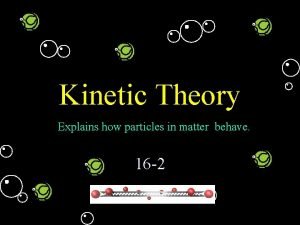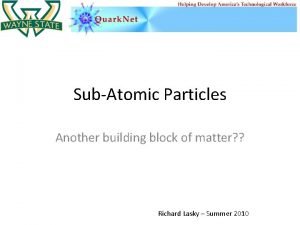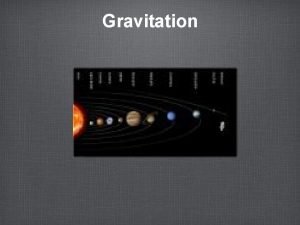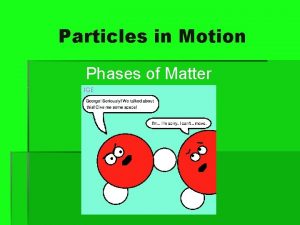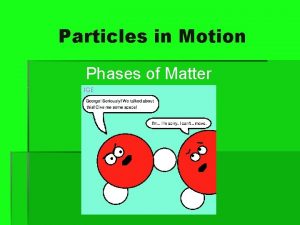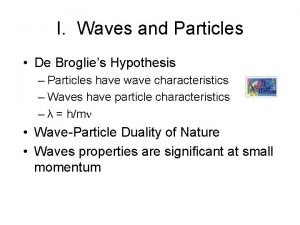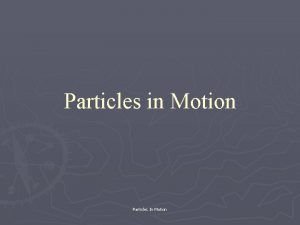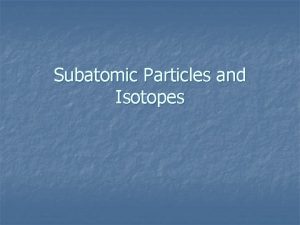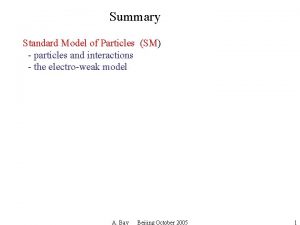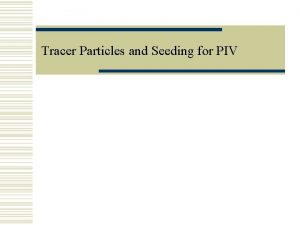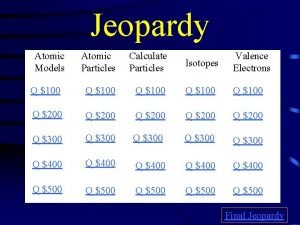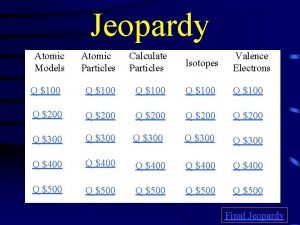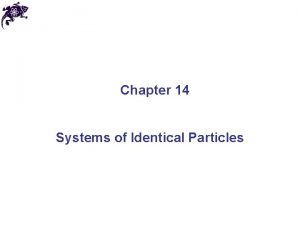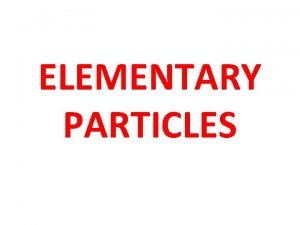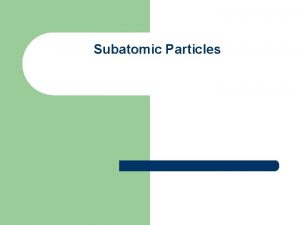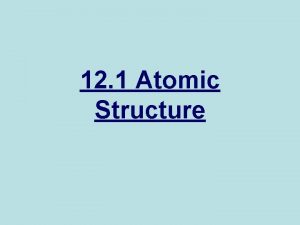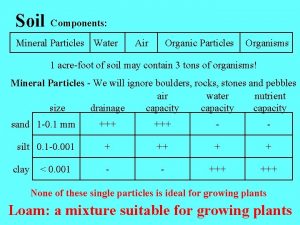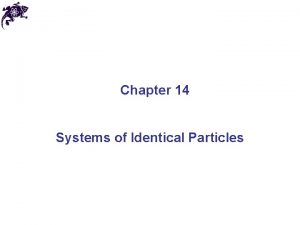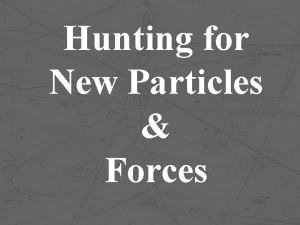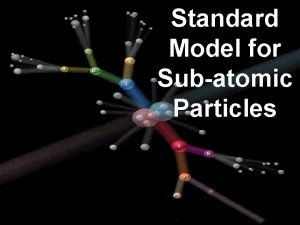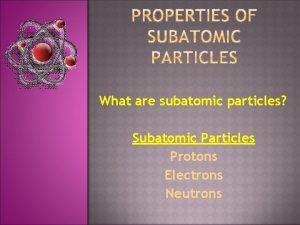Matter Matter and Particles All matter The state





























- Slides: 29

Matter

Matter and Particles • All matter • The state of a substance

The Phases of Matter • There are FOUR states of matter: 1. Solid 2. Liquid – 3. Gas – 4. Plasma –

Solid Particles • In a solid, the particles are __________. They vibrate in place and the attraction between them is _____. This causes the particles to lock together.

Liquid Particles • In a liquid, the particles _______________. This allows the particles to flow around and over each other. Liquids assume _______________. • Liquids can also be called ____– which means a ______________

Gas Particles • In a gas, the particles ____________________________. That’s why a gas will spread out in all directions – filling up a balloon, a room, or the atmosphere.

Melting: From Solid to Liquid • Melting • The temperature at which a solid melts is called its _______. The melting point is different for different solids. For ice, it is 0 o. C or 32 o. F.

Melting and the Particles • As you heat a solid, the particles in that solid will begin to move_______________. • Eventually the motion of the particles will become great enough to overcome the attraction that locks the particles together as a solid. When that happens, the solid becomes a liquid because the particles start to flow.

Freezing: From Liquid to Solid • Freezing • The temperature at which a liquid freezes is called its _______. The freezing point for different solids is different. For water, it is 0 o. C or 32 o. F.

Freezing and the Particles • If you cool a liquid, the particles will begin to ______________. • Eventually the motion of the particles will slow to the point where they cannot overcome the attraction between them. When that happens, the particles will lock together and become a solid.

Vaporization: From Liquid to Gas • Vaporization • The temperature at which water changes from a liquid state to a gaseous state is 100 o. C or 212 o. F. This is known as its _______.

Vaporization and the Particles • As a substance is heated, its particles begin to _______________. • During vaporization, the fastest particles are able to overcome the attraction of the particles around them and break free completely. These escaped particles become a gas (ex: water vapor).

Vaporization vs. Evaporation • Vaporization refers to _____________________________. • _______ is a specific type of vaporization which occurs at temperatures below the boiling point of a liquid. • So vaporization includes ______________.

Vaporization vs. Evaporation • Evaporation occurs _____________, but vaporization could happen _____________when a liquid is boiling. • Think about water evaporating from a puddle vs water boiling in a pot.

Vaporization: Solid to Gas • Sublimation • This is a result of vapor pressure and temperature relationships. (Examples include dry ice and freeze drying food. )

Condensation: From Gas to Liquid • Condensation • The temperature at which a gas condenses is called its condensation point. For water vapor, it is 100 o. C or 212 o. F.

Condensation: From Gas to Liquid • If you cool a gas, the particles will begin to ______________. • Eventually the motion of the particles will slow to the point where they cannot overcome the attraction between them. When that happens, the particles will lock together and become a liquid.


Physical Properties • A physical property of matter • Some physical properties are color, odor, mass, volume, magnetism, ability to conduct current, strength, flexibility, hardness, and texture. • Ex – Will your books fit into you backpack? You are using the physical property of volume. 19

Physical Properties • Thermal conductivity – • Ex. Styrofoam is a poor conductor. • State of Matter – • (ex: ice, water vapor) • Density – • (ex: Lead is very dense so it is used to make an anchor. ) 20

Physical Properties • Solubility – • (ex: Kool-Aid power dissolves is water. ) Sometimes you can increase solubility by changing the temperature. • Ductility – • (ex: Copper is often used to make wiring because it is ductile. ) • Malleability – • (ex: Aluminum can be rolled into sheets to make foil. ) 21

Physical Changes • A physical change is • Ex. A piece of silver is pounded and molded into a heart-shaped pendent. (it is still silver) • Ex. – changing from a liquid to a solid (or any phase change) • Ex. – crushing an Aluminum can. It is still aluminum, just the shape has changed. • Ex – Sawdust – it is still wood – only in smaller pieces. 22

Chemical Properties • Chemical properties describe matter based on its ____________________________________ (in the form of a chemical reaction). • Chemical changes occur when • Ex. – burning wood, tarnishing, and rusting 23

Chemical Properties • Flammability – • (wood can burn, but ash and smoke cannot) • Reactivity – is the ability of two or more substances to __________________ • Chemical reactions involve two main kinds of changes that you can observe – __________________ 24

Physical Properties vs. Chemical Properties • A nail will bend – • A nail will rust – ______________________(iron is reacting with oxygen to make iron oxide - ______) • Alcohol will evaporate – • Alcohol will burn – ________– it is not alcohol any more. 25

How do I know that a chemical change is taking place? • There will be a change is odor, color, heat will be either absorbed or released, the substance will bubble or fizz, light or sound may be given off. • Ex. • • • 26

Changes in Energy • As matter changes, it can either absorb or release energy. A change in energy occurs during a chemical reaction. • An endothermic reaction • Many endothermic reactions occur when heat is constantly added. (Ex: egg frying) In other words…they need energy to keep going. 27

Changes in Energy • An exothermic reaction • After an exothermic reaction, the products have less energy than the reactants. (Ex: the burning of fuel) • The reaction between fuel and oxygen in an airplane engine releases energy, mostly in the form of heat. The expansion and movement of the gases out of the plane exerts a force that moves the plane forward. 28

Can physical and chemical changes be reversed? • Physical changes are __________. You can melt ice and then freeze it again. • Chemical changed are _________. When a firework explodes it would be almost impossible to put the materials back together. 29
 The kinetic theory explains how particles in matter behave
The kinetic theory explains how particles in matter behave Building block of matter which contains subatomic particles
Building block of matter which contains subatomic particles Mutual force
Mutual force Name all the lines
Name all the lines Hát kết hợp bộ gõ cơ thể
Hát kết hợp bộ gõ cơ thể Ng-html
Ng-html Bổ thể
Bổ thể Tỉ lệ cơ thể trẻ em
Tỉ lệ cơ thể trẻ em Voi kéo gỗ như thế nào
Voi kéo gỗ như thế nào Chụp phim tư thế worms-breton
Chụp phim tư thế worms-breton Hát lên người ơi alleluia
Hát lên người ơi alleluia Các môn thể thao bắt đầu bằng từ đua
Các môn thể thao bắt đầu bằng từ đua Thế nào là hệ số cao nhất
Thế nào là hệ số cao nhất Các châu lục và đại dương trên thế giới
Các châu lục và đại dương trên thế giới Cong thức tính động năng
Cong thức tính động năng Trời xanh đây là của chúng ta thể thơ
Trời xanh đây là của chúng ta thể thơ Mật thư tọa độ 5x5
Mật thư tọa độ 5x5 101012 bằng
101012 bằng độ dài liên kết
độ dài liên kết Các châu lục và đại dương trên thế giới
Các châu lục và đại dương trên thế giới Thể thơ truyền thống
Thể thơ truyền thống Quá trình desamine hóa có thể tạo ra
Quá trình desamine hóa có thể tạo ra Một số thể thơ truyền thống
Một số thể thơ truyền thống Cái miệng nó xinh thế chỉ nói điều hay thôi
Cái miệng nó xinh thế chỉ nói điều hay thôi Vẽ hình chiếu vuông góc của vật thể sau
Vẽ hình chiếu vuông góc của vật thể sau Nguyên nhân của sự mỏi cơ sinh 8
Nguyên nhân của sự mỏi cơ sinh 8 đặc điểm cơ thể của người tối cổ
đặc điểm cơ thể của người tối cổ V cc
V cc Vẽ hình chiếu đứng bằng cạnh của vật thể
Vẽ hình chiếu đứng bằng cạnh của vật thể Fecboak
Fecboak
